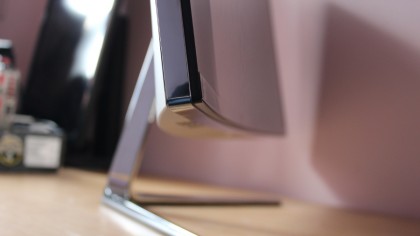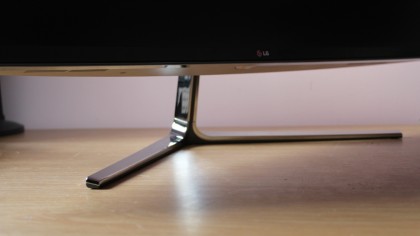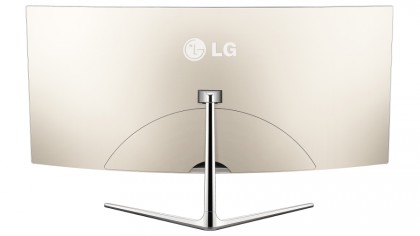TechRadar Verdict
The high price is this screen's biggest problem – in other areas, its curved display is attractive for work and play, image quality is high and it's got a huge diagonal size.
Pros
- +
Sharp, high resolution
- +
Huge diagonal
- +
Slick, effective curved design
- +
Great image quality
Cons
- -
More expensive than rivals
- -
Lack of adjustment options
- -
Uniformity is mediocre
Why you can trust TechRadar
LG has been at the forefront when it comes to ultra-wide PC monitors, and it's easy to see why the company has attracted a fair amount of attention. This screen's 3,440 x 1,440 resolution means it's a tempting option for work or gaming, and the firm's latest panel ups the ante by adding a curve.
Design
It's a subtle change to existing ultra-wide panels, but the gentle arc of the screen is noticeable. It makes it easier to see items at either end of the wide screen, which can enhance work and play – we didn't have to squint or move our head to see documents or browser windows when working, or small HUD items during games.

The 34-inch diagonal and 3,440 x 1,440 resolution returns a density level of 110ppi. That's lower than the 163ppi and 145ppi you'll find on 27-inch and 30-inch 4K panels, and it's a double-edged sword – you won't get the sharpness and detail of a 4K screen but, conversely, you won't struggle to make out desktop features.
The LG compares well with lesser resolutions, too. Monitors with a 1080p resolution and 22-inch or 24-inch 1080p diagonals have density levels of 100ppi and 92ppi respectively, so switching to the 34UC97 increases sharpness and eliminates bezels.
It trades blows with its key rival. The Samsung SD590CS is a cheaper curved panel than the LG, but its 27-inch diagonal is smaller and its 1,920 x 1,080 resolution is far less impressive.
LG's screen looks the part. Its narrow, angled chrome-effect stand is smart and sturdy, and the screen is surrounded by a thin, dark bezel. The screen has an anti-glare layer, and there are no buttons on the front to disturb the 34UC97's clean lines.

Its sheer size does mean that it's not too easy to build, with numerous screws needed to secure the stand in place. It's got limited adjustment – 20 degrees of tilt, but that's it, with no height or side-to-side angle changes possible. All the ports face downwards, which makes access tricky, and they can be covered with a plastic shroud, which makes access harder but improves neatness.
It's not exactly lightweight, either, at 18 pounds (8.2kg) – more than 5 pounds (2kg) weightier than the Samsung. The screws, ports and weight make the LG awkward to put together, but that's not a huge problem – after all, most users only go through the setup procedure once.

Specs
The curve isn't the only bit of sensible design. The LG's 21:9 aspect ratio matches films, so there's no need for irritating black bars above and below the image. The rear serves up a versatile port selection: two Thunderbolt ports promise to play nicely with Apple hardware, and there are two HDMI ports and a DisplayPort connector. It's got a pair of USB ports, an audio jack, and two 7W speakers.
On the inside it shares the same panel as LG's non-curved 34UM95. It's an IPS screen with a W-LED backlight, which means that this screen should have great viewing angles and top-notch colour accuracy.
A deeper dive into the specs reveals LG's professional aspirations. It's a 10-bit panel designed to display 99% of the sRGB colour gamut, and in our tests it's not far off, displaying 97.2% of the gamut with aplomb. It even comes with a sheet detailing LG's factory calibration, so you're able to see the subtle differences between review samples and the monitor you've bought yourself.
Mike has worked as a technology journalist for more than a decade and has written for most of the UK’s big technology titles alongside numerous global outlets. He loves PCs, laptops and any new hardware, and covers everything from the latest business trends to high-end gaming gear.
